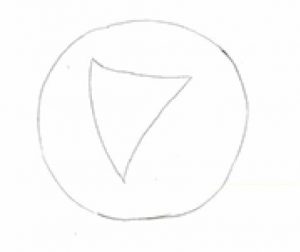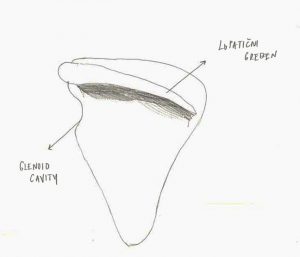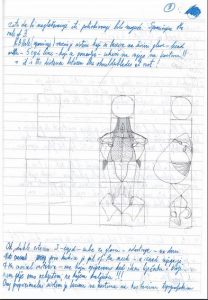Why is the Shoulder Girdle the Most Difficult Thing to Draw on the Human Body
In his marvelous lectures Rober Beverly Hale famously claimed that the shoulder girdle is the most complex thing to draw on the human body. And, of course, he was right. The shoulder girdle consists of layers of muscles which lay one on top of the other and cover the movable shoulder blade. The movable shoulder blade’s exact location is difficult to fathom, because it’s a) movable and b)it’s covered in muscle layers which renders it almost invisible. It’s an absolute neccessity to find the exact location of the shoulder blade on the rib cage before you even attempt drawing the shoulder girdle in its charming complexity.
In the course of writing this blog of mine, I have attempted to emphasize numerous times that the draftsmen should not be allowed to place the tip of their pencil on the paper without having an exact and simplified concept of mass of the thing they wish to draw. That decision must be made long before you even attempt drawing. Despite my constant protestations, my students often apply a haphasard philosophy to drawing. They confuse aimless doodling for drawing. Drawing is, unlike doodling, an intelectual enterprize and its most important instrument is the brain. The importance of applying your intellect to drawing is the most important drawing lesson there is. Michelangelo famously said that you draw with your brain and not with your hand.
Let us return, though, to the shoulder girdle with its main protagonist the shoulder blade. If we’d taken the lesson in the paragraph above to heart, we would know that before attempting to draw the damn thing in relation to the rib cage we must find out about its shape. The shape of the shoulder blade may be reserched on the skeleton (which every aspiring painter should posess) or in the anatomy books (which every aspiring artist should study). Hale proposes a spherical triangle as a basic massing concept representig the shoulder blade.
The shoulder blade itself has a thing called „spina scapula“ attached to it. It’s a bony protrusion which, according to Hale, has a spherical quality. In order to understand it,we must deal with the shape of the spyral and its construction. The simplest way to construct the spyral is to draw it on the cylinder. The spyral circles around it.
And if we took the spine of the scapula and drawn it upon the cylinder as a part of the spyral it would look something like this:
To sum things up: upon the spherical triangle representing the scapula lies an spyral spine of the scapula. And underneath the the spine of the scapula lies the glenoid cavity which holds the head of the humerus or the bone of the upper arm.
Now we finally have the scapula in all its glory. The scapula has to be fitted into the proportional system and scaled against the rib cage. Hale proposed the famous „five-eyed-line“ as the measuring device for the human body. I have extensively covered the subject of the construction of the rib cage in my post „How to draw the rib cage“.
Here is what Hale’s proportional system looks like:
The structure Hale proposed helps us draw the back in correct academic propošortions. My students are vehemently opposed to any attempt of systemisation or discipline, because they are convinced that it will damage their creativity and hamper their freedom. They suffer from sentimental convictions which are typical of our time and fantasize about unlimited potential and freedom from all the rules. I always tell them that it’s very hard to break the rules if you don’t know what they are. The advantages of having a proportional system is that you have a comparison against which you can measure the model which speeds up the observational process. The trained artist can then either supress or emphasize things according to his artistic intent and is, in that way, able to get his own original message across. Without the system of reference the message will not get across because it will be impossible for the recipient to grasp the arbitrary meaning. And that isn’t freedom, that’s just nonsense and very boring.





Najnoviji komentari